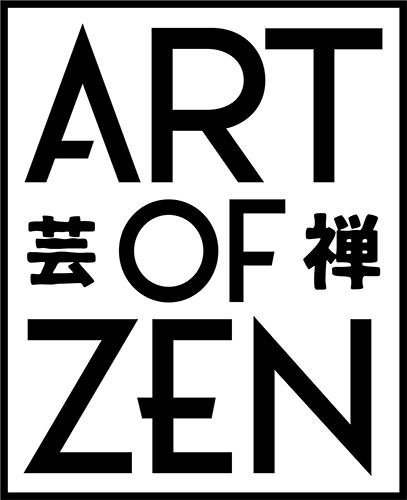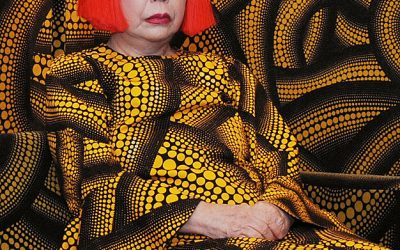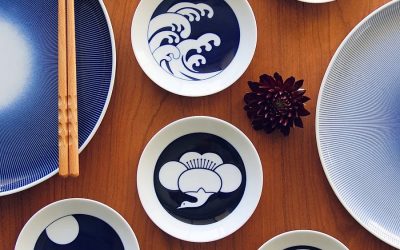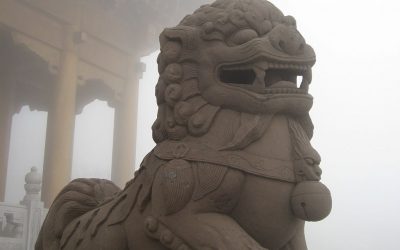Yayoi Kusama’s mesmerizing polka-dotted creations, immersive installations, and avant-garde approach to art have made her an iconic figure in the world of creativity.
Japanese Art
Japanese art merges aesthetic, spiritual, and philosophical elements, showcasing tradition’s influence on modernity. This category delves deep into various aspects of Japanese culture, revealing the profound meanings embedded within its art.
Foo Dogs: Guardians of the Spiritual Realm
Foo Dogs serve as symbolic protectors in Japanese art and culture, not just decorative elements. These statues often guard the entrances of temples and homes, warding off evil spirits. The article on Foo Dogs in Japanese Art and Culture explores their origins. It highlights their role as protectors that blend myth with everyday life, safeguarding both physical and spiritual spaces.
Enso Circle: Embracing Imperfection
The Enso circle, a potent symbol in Zen Buddhism, represents enlightenment, the universe, and the void. Artists traditionally paint it in a single brushstroke. This technique captures the imperfection and transient nature of existence beautifully. Our exploration in The Enso Circle in Zen offers insights. It shows how this circle invites contemplation and embodies the spiritual journey of Zen practices.
Torii Gates: The Threshold Between Worlds
Torii gates symbolize the transition from the mundane to the sacred in Japanese culture. These iconic structures, discussed in The Enchanting World of Torii Gates in Japan, are not just architectural marvels. They also carry deep symbolism, marking Shinto shrine boundaries and offering pathways to the divine. They stand as serene invitations to step into a realm where nature and spirituality converge.
Wave Art: The Rhythm of Nature
Japanese wave art captures the sea’s unstoppable force and rhythmic motion. This theme is common in many famous woodblock prints. The article on The Significance of Japanese Wave Art examines how waves inspire artists like Hokusai and Hiroshige. The dynamic forms and powerful imagery of waves symbolize life’s unstoppable forces and nature’s cycles.
Conclusion: A Journey Through Japanese Art
This exploration of Japanese art offers more than aesthetic enjoyment. It opens a gateway to understanding the deep spiritual and philosophical underpinnings of Japanese culture. Each element, from Foo Dogs to Enso circles, from Torii gates to expressive wave art, enriches our appreciation. It invites deeper engagement with themes that resonate across time and culture in Japan. As we explore these artistic expressions, we gain insights into a culture that marries the visual with the spiritual. This creates a rich tapestry that continues to influence and inspire globally.
Tatsuro Kiuchi: The Japanese Illustrator Who Loves Old Things
Tatsuro Kiuchi is a Tokyo-based illustrator who has created art for clients like Google, Royal Mail, The New York Times, and The New Yorker.
BAPE Designs: A Closer Look at the Streetwear Icon
Exploring the origins, art, and Cultural impact of BAPE designs (A Bathing Ape) in Japan and beyond.
Introducing Two New Contemporary Mount Fuji Art Prints
I’ve released two brand new limited edition Mount Fuji art prints, with a modern take on the ukiyo-e style.
Did You Know Freddie Mercury was a Japanese Art Collector?
How the iconic Queen frontman Freddie Mercury’s passion for Japanese Art shaped an amazing Sotheby’s art auction.
Kihara Komon: Beautiful Japanese Art on Porcelain
The Kihara Komon plate collection is a testament to the enduring connection between traditional Japanese art and contemporary design.
The Swatch Hokusai and Astrolabe Watch: Time Meets Art
The Swatch Hokusai and Astrolabe watch is a remarkable collaboration between Swatch and the Louvre Abu Dhabi Museum, bridging East and West.
Foo Dogs in Japanese Art and Culture
Foo Dogs, also known as “Komainu” or “Lion Dogs,” hold significant importance in Japanese art and culture.
The Enso Circle in Zen: Symbolism and Artistry
Explore the deep symbolism and artistry of the Enso Circle in Zen philosophy and practice. Discover the origins, artistic expression, and profound meaning behind this cherished symbol.









